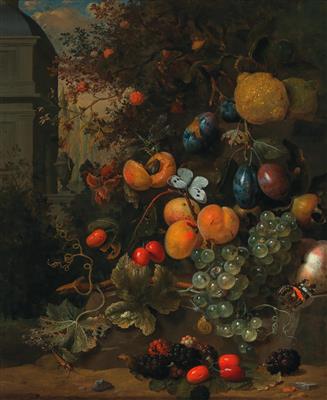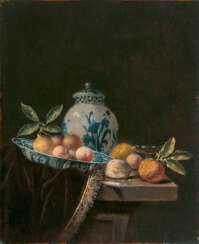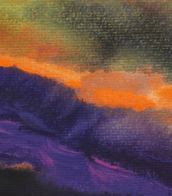dutch still life

Pieter de Ring was a Dutch painter who specialised in still lifes. He became famous for his rich banquet depictions of fruit, shrimp, oysters, musical instruments, books and precious objects such as nautilus shells or Chinese porcelain.
In his youth, he worked as a bricklayer during the day and drew in the evening; the other family members all worked in the fabric industry. After painting a number of pictures, he apprenticed himself to Jan Davidsz. de Heem with his grandfather's permission. In 1647 he became a founding member of the Guild of Saint Lucas.


Georg Flegel was a German painter, best known for his still-life works.
According to the RKD he was pupil of Lucas van Valckenborch in Linz during 1582-1592. In a period of about 30 years (c. 1600–1630), he produced 110 watercolor and oil pictures, mostly still-life images which often depicted tables set for meals and covered with food, flowers and the occasional animal.


Pieter Claesz was a Dutch Golden Age painter of still lifes.
He and Willem Claeszoon Heda, who also worked in Haarlem, were the most important exponents of the "ontbijt" or dinner piece. They painted with subdued, virtually monochromatic palettes, the subtle handling of light and texture being the prime means of expression. Claesz generally chose objects of a more hospitable kind than Heda, although his later work became more colourful and decorative. Claesz's still lifes often suggest allegorical purpose, with skulls serving as reminders of human mortality. The two men founded a distinguished tradition of still life painting in Haarlem. Pieter Claesz was influenced by the artist movement 'Vanitas'.


Jan Jansz. den Uyl was a painter of the Dutch Golden Age. He very much specialized in the form of still life known as the breakfast piece, or, in the elaborate style of painters like den Uyl, banquet pieces (banketjestukken). He also painted landscapes and animal paintings.


Clara Peeters was a Flemish still-life painter from Antwerp who worked in both the Spanish Netherlands and Dutch Republic.
Peeters is the best-known female Flemish artist of this era and one of the few women artists working professionally in seventeenth-century Europe, despite restrictions on women's access to artistic training and membership in guilds. Peeters specialized in still-life paintings with food and was prominent among the artists who shaped the traditions of the Netherlandish ontbijtjes, "breakfast pieces," scenes of food and simple vessels, and banketjes, "banquet pieces" with expensive cups and vessels in precious metals.


Willem van Aelst was a Dutch Golden Age artist renowned for his exquisite still-life paintings featuring flowers, game, and various objects that exemplify the era's opulent lifestyles. Born into a family of city magistrates in Delft, Willem van Aelst trained under his uncle, Evert van Aelst, and became a master in the Guild of Saint Luke at Delft. His career spanned various European cities, including a significant period in Florence as court painter to Ferdinando II de' Medici, Grand Duke of Tuscany, where he was awarded a gold chain and medal for his artistic prowess. The artist signed his paintings with the nickname "Vogelverschrikker" (bird scarecrow), which later became his pseudonym.
Willem van Aelst's contributions to still-life painting were significant, with his works being characterized by intricate attention to detail, use of light and texture, and a mastery in depicting the surfaces of various materials, from the softness of petals to the sheen of metal objects. His paintings often feature elegantly arranged compositions of fruits, flowers, and hunting trophies, set against dark backgrounds that enhance their vivid detail and realism.
His works can be found in prestigious collections worldwide, including the Palazzo Pitti in Florence, the Koninklijk Museum voor Schone Kunsten in Antwerp, the Mauritshuis in The Hague, and the Museo Thyssen-Bornemisza in Madrid. These paintings not only showcase Willem van Aelst's technical skill but also reflect the cultural and aesthetic values of his time, making them invaluable to both historians and art collectors.
Van Aelst's legacy includes teaching notable artists like Rachel Ruysch and Maria van Oosterwijck, highlighting his influence on subsequent generations of still-life painters. Despite his death in 1683, his artistry continues to be celebrated for its elegance and refinement, capturing the essence of the Dutch Golden Age for modern audiences to appreciate.
For collectors and experts in art and antiques, Willem van Aelst's work represents a pinnacle of still-life painting, offering a window into the richness of 17th-century Dutch culture and aesthetics. His pieces are a testament to the enduring beauty and complexity of still-life compositions, making them a prized addition to any collection.
To stay informed about new discoveries and opportunities related to Willem van Aelst's works, including sales and auction events, sign up for updates. This subscription will ensure you remain connected to the vibrant world of Dutch Golden Age art, with a focus on van Aelst's contributions and legacy.


Juriaen van Streeck (Dutch: Juriaan van Streek) was a Dutch painter and draughtsman of the Golden Age period. He produced portraits, genre paintings and (mainly) still lifes.


Pieter de Ring was a Dutch painter who specialised in still lifes. He became famous for his rich banquet depictions of fruit, shrimp, oysters, musical instruments, books and precious objects such as nautilus shells or Chinese porcelain.
In his youth, he worked as a bricklayer during the day and drew in the evening; the other family members all worked in the fabric industry. After painting a number of pictures, he apprenticed himself to Jan Davidsz. de Heem with his grandfather's permission. In 1647 he became a founding member of the Guild of Saint Lucas.


Pieter de Ring was a Dutch painter who specialised in still lifes. He became famous for his rich banquet depictions of fruit, shrimp, oysters, musical instruments, books and precious objects such as nautilus shells or Chinese porcelain.
In his youth, he worked as a bricklayer during the day and drew in the evening; the other family members all worked in the fabric industry. After painting a number of pictures, he apprenticed himself to Jan Davidsz. de Heem with his grandfather's permission. In 1647 he became a founding member of the Guild of Saint Lucas.


Martinus Nellius was a Dutch painter of the Golden Age who painted mainly still lifes with fruit.


Harmen Steenwijck was a Dutch painter of the Gilded Age. He created several genre works, but concentrated mainly on still lifes, including vanitas, in light, rich tones with elements of fruit and fish. Harmen Stenwijk's most famous work, however, is Allegory of the Vanity of Human Life.


Pieter de Ring was a Dutch painter who specialised in still lifes. He became famous for his rich banquet depictions of fruit, shrimp, oysters, musical instruments, books and precious objects such as nautilus shells or Chinese porcelain.
In his youth, he worked as a bricklayer during the day and drew in the evening; the other family members all worked in the fabric industry. After painting a number of pictures, he apprenticed himself to Jan Davidsz. de Heem with his grandfather's permission. In 1647 he became a founding member of the Guild of Saint Lucas.













































































